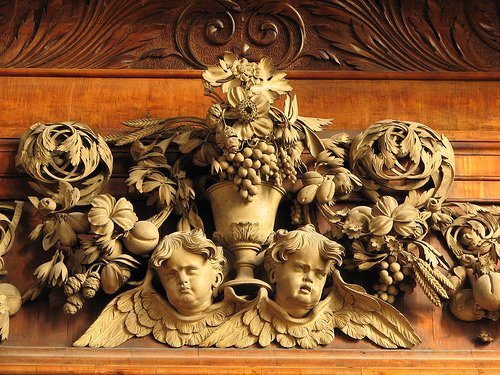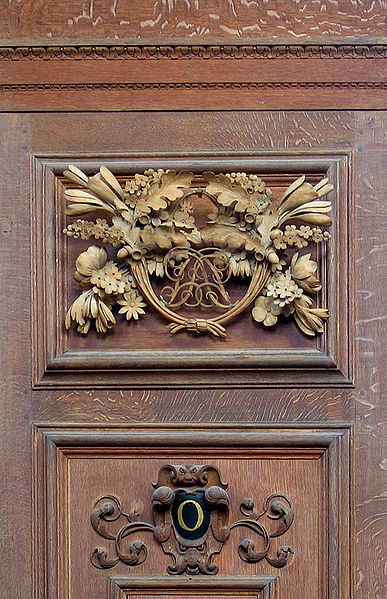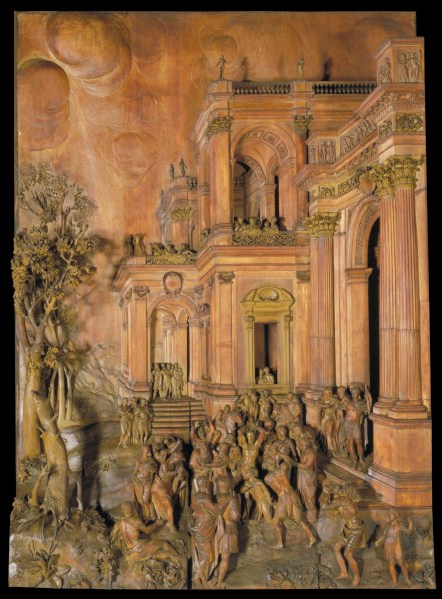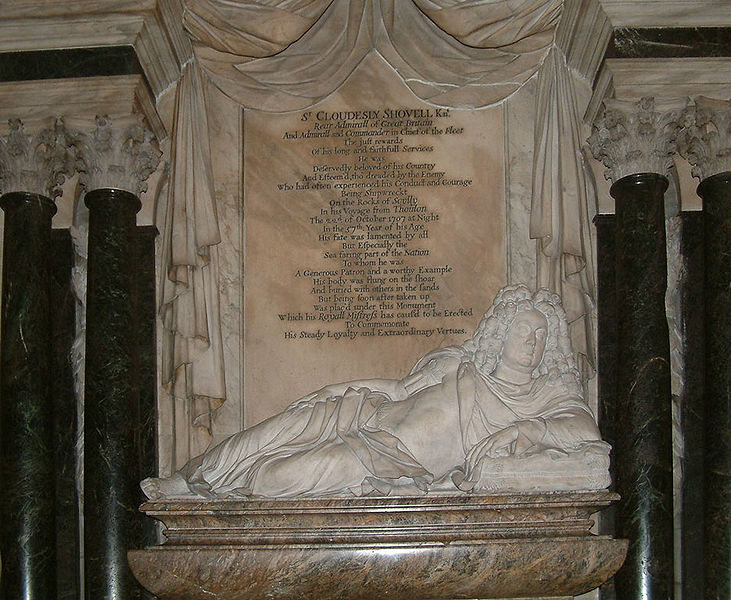<Back to Index>
- Astronomer Joseph Nicolas Delisle, 1688
- Sculptor Grinling Gibbons, 1648
- 21st Governor General of Canada Jules Léger, 1913
PAGE SPONSOR
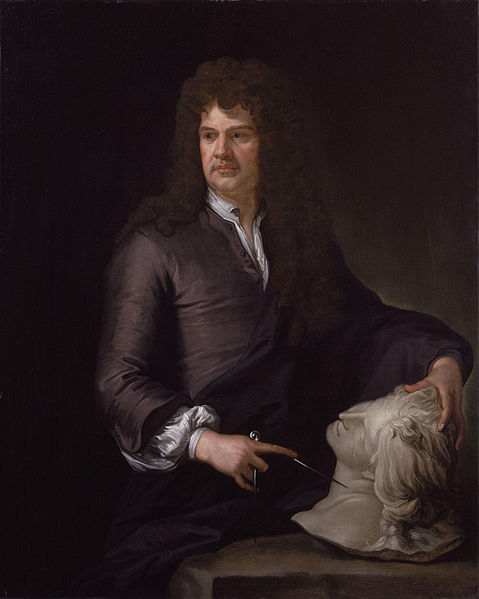
Grinling Gibbons (4 April 1648 – 3 August 1721) was an English sculptor and wood carver known for his work in England, including St Paul's Cathedral, Blenheim Palace and Hampton Court Palace. He was born and educated in Holland where his father was a merchant. He is widely regarded as the finest wood carver working in England, and the only one whose name is widely known among the general public. Most of his work is in wood, especially decorative Baroque garlands made up of still-life elements at about life size, made to frame mirrors and decorate the walls of churches and palaces, but he also produced furniture and small relief plaques with figurative scenes. He also worked in stone, mostly for churches. By the time he was established he led a large workshop, and the extent to which his personal hand appears in later work varies.
Very little is known about his early life. The name Grinling is formed from sections of two family names. He was born in Rotterdam, Netherlands, and it is sometimes thought that his father may have been the Englishman Samuel Gibbons, who worked under Inigo Jones, but even two of his closest acquaintances, the portrait painter Thomas Murray and the diarist John Evelyn, cannot agree on how he came to be introduced to King Charles II. He moved to Deptford, England, around 1667, and by 1693 had accepted commissions from the royal family and had been appointed as a master carver. By 1680 he was already known as the "King's Carver", and carried out exquisite work for St Paul's Cathedral, the Palace of Windsor, and the Earl of Essex's house at Cassiobury. His carving was so fine that it was said a pot of carved flowers above his house in London would tremble from the motion of passing coaches. He was a Quaker.
The diarist Evelyn first discovered Gibbons' talent by chance in 1671. Evelyn, from whom Gibbons rented a cottage near Evelyn's home in Sayes Court, Deptford (today part of south-east London), wrote the following: "I saw the young man at his carving, by the light of a candle. I saw him to be engaged on a carved representation of Tintoretto's "Crucifixion", which he had in a frame of his own making." Later that same evening, Evelyn described what he had seen to Sir Christopher Wren. Wren and Evelyn then introduced him to King Charles II who gave him his first commission - still resting in the dining room of Windsor Castle.
Horace Walpole later wrote about Gibbons: "There is no instance of a man before Gibbons who gave wood the loose and airy lightness of flowers, and chained together the various productions of the elements with the free disorder natural to each species."
Gibbons is buried at St Paul's, Covent Garden,
London. There are still direct descendants of Gibbons in the UK today
who have followed the family tradition of wood carving down through 13
generations. One male produces fine English rocking horses and works to
commissioned carvings and restorations. His carvings can be viewed in
Ironbridge, Shropshire, UK. He was employed by Wren to work on St Paul's Cathedral and later was appointed as master carver to George I.
He was also commissioned by King William III to create carvings, some
of which adorn Kensington Palace today. An example of his work can be
seen in the Prescence Chamber above the fireplace, which was originally
intended to frame a portrait of Queen Mary II after her death in 1694.
Also in the Orangery at Kensington, you can see some examples of his
work. Many fine examples of his work can still be seen in the churches
around London - particularly the choir stalls and organ case of St
Paul's Cathedral. Some of the finest examples of Gibbons work
accessible to the general public are those on display at the National
Trust's Petworth House in West Sussex, UK. At Petworth the Carved Room is host to a fine and extensive display of intricate wooden carvings by Gibbons. His
association with Deptford is commemorated locally: Grinling Gibbons
Primary School is in Clyde Street, near the site of Sayes Court, and St. Nicholas' Church has The Valley of the Dry Bones, one of Gibbons' works, permanently on display. His work can be seen in the London churches of St Michael Paternoster Royal and St James, Piccadilly, where he carved the wood reredos and marble font. The Anglican dislike of painted altarpieces typically
left a large space on the east wall that needed filling, which often
gave Grinling's garlands a very prominent position, as here. The famous sculptor of Brussels Peter van Dievoet had collaborated with Grinling Gibbons, but went back to Brussels after the revolution of 1688. Gibbons also made the monument for Admiral Sir Cloudesley Shovell, a British naval hero killed in a disastrous shipwreck in 1707. Shovell's large marble monument can be seen in the south choir aisle of Westminster Abbey. Gibbons' work very often includes carvings of peapods.
A myth states that he would include a closed pod in his work, only
carving it open once he had been paid. If the pea pod was left shut it
supposedly showed that he had not been paid for the work. This is
implausible because he would not have left his carvings (that would
have taken months to complete) in situ had he not been paid. His work (with the exception of religious carvings) also often includes a 5-petal flower like a periwinkle or a Tudor rose. It is the crest still used by his modern descendent today.
